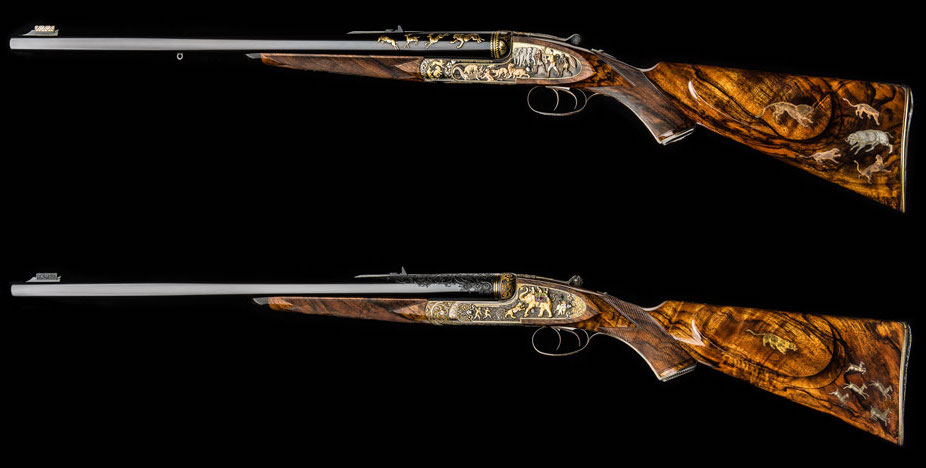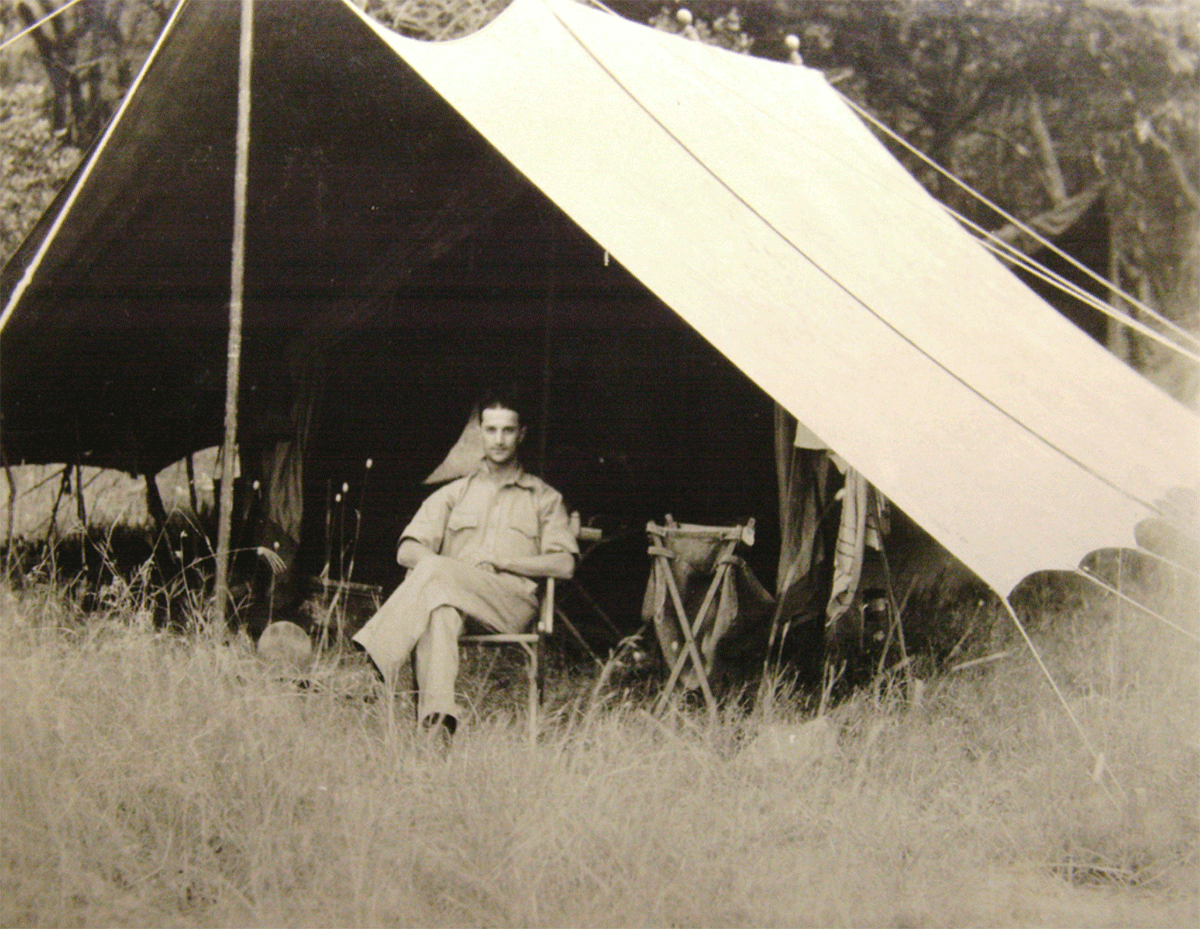While Westley Richards has always been famous for its hand-detachable lock or “droplock” double rifles, the company also has a heritage of building some very fine sidelock double rifles. During the golden era of sporting rifle manufacture from 1900 to 1939, Westley Richards found that in order to compete with the best London sidelock makers of the time, its own version of the sidelock double rifle had to be offered to a discerning clientele. So it was that the company brought its own sidelock to the marketplace.
Sadly, this period of inventive gunmaking came to an end with the beginning of World War II and the subsequent dissolution of the once mighty British Empire. British gun manufacture went into rapid decline, and the Westley Richards sidelock double rifle disappeared from the company’s limited offerings.
The late 1980s and early 1990s saw a renaissance in fine gunmaking, with Westley Richards’ double rifles featuring heavily in this resurgence. A new generation of clients, both hunters and collectors, turned to Westley Richards to create for them some of the finest big game rifles to be built in modern times.
As the popularity of the double rifle grew, so did enquiries for the reintroduction of a new sidelock double rifle to complement Westley Richards existing fixed-lock and droplock double rifles, so, in the early 2000s, work began on the new model sidelock double rifle.
As the caliber choices most commonly ordered at Westley Richards were the .470, .500, .577, and .600 Nitro Express, it was decided that these would form the core of the project. Appropriately scaled actions would be designed to accommodate them, ensuring the correct weight and point of balance. For added strength, only back-action locks would be used with a pinless surface, allowing an uninterrupted surface for the engraver. To be a true Westley Richards, the rifle had to have the company’s distinctive model “C” dolls-head barrel extension with the signature pivoting wide-bodied top lever—a feature found on all Best-quality guns built by the company.
When considering the .600-caliber actions, it was by a stroke of luck that a beautiful vintage .600 Webley & Scott sidelock passed the company’s way, thus enabling a series of measurements for a truly magnificent beast of an action to be taken. With news that Westley Richards could once again match the best in London with a genuine sidelock action of its own, orders came in for numerous .600s, including two specifically: the magnificent “India” and “Africa” rifles.
These unique engraving projects came about in response to Westley Richards envied position as a maker of “high art” firearms, a tradition, coincidentally, that dates back to the times of the Maharajas. The idea was to produce two exemplary pieces of the gunmakers’ art that would celebrate the two most important continents on which such rifles had traditionally been used.
The India rifle was the first to be executed, and in doing so homage was paid to the great courts of the Maharajas. They were at one time the wealthiest people on the planet, and they were major patrons of the British gunmakers, including Westley Richards. They had a long history of hunting that dated back centuries, so it was decided that these elements would be incorporated into “their” rifle.
Of course, coming up with an idea is one thing; executing it is quite another! It was once again a moment of Providence when a member of Westley Richards’ management bumped into the relatively unknown Paul Lantuch while attending the various hunting shows in America. Lantuch, a Lithuanian by birth, is an artist, jeweler, and engraver with classical training who was just waiting for such a unique opportunity to fall into his lap. Simon Clode, former managing director of Westley Richards, commissioned him to undertake one of the most import executions undertaken by the company since the days of the Boutet gun.
As you can see, the results were spectacular, with gold, diamonds, emeralds, rubies, and sapphires all used in the execution of a grand masterpiece. Apart from the more obvious inlays to the metal parts of the rifle, the stock was also inlaid with gold animals—a fitting tribute to the wealth and ostentatious lifestyle of the once mighty Maharajas.
With the benchmark set so high, work then turned to the Africa rifle. Having seen what Lantuch was capable of, he was once again commissioned to produce this new piece for the company. This time the scenes were to portray the early days of hunting in Africa, a continent where safaris were arduous affairs riddled with danger from both the wildlife and native tribes.
Concentrating primarily on the use of gold, the rifle has 11 variations of the precious metal, much of it smelted by hand and then inlaid and sculpted into figures and animals. Once the rifle had been through the case-color-hardening process, the golds were cleaned with differing acids and alkaline to create tone. All in all, a mammoth undertaking.
Individually or as a pair, the India and Africa rifles are a statement to the skill of the gunmakers and craftsmen involved in the project. They took thousands of hours to complete, and no expense was spared in the execution. The rifles once again place Westley Richards at the forefront of bespoke gunmaking, while also paying homage to our proud hunting heritage.
We hope you take as much enjoyment from the craftsmanship as we did from the actual making of them.
For more information on Westley Richards and its impressive line of firearms, visit westleyrichards.com.





